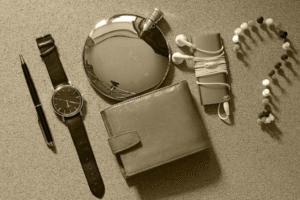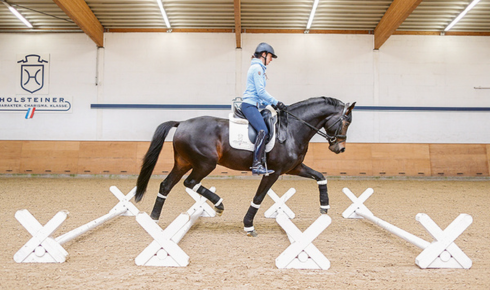Key Takeaways:
- Cavaletti training provides crucial benefits for both horses and riders, improving balance, flexibility, and coordination.
- Simple adjustments in cavaletti setup allow the exercise to be tailored for beginners to advanced riders.
- Scientific research confirms that using ground poles and cavaletti supports horses’ muscular development and joint health.
- Practical advice helps riders integrate cavaletti routines safely and effectively.
- Frequent, low-impact cavaletti sessions reduce injury risk and build confidence in flatwork, jumping, and beyond.
Table of Contents:
- Why Cavaletti Matters in Equestrian Training
- The Science Behind Cavaletti Work
- Getting Started: Cavaletti for Beginners
- Leveling Up: Advanced Cavaletti Patterns
- Expert Tips for Safe and Engaging Sessions
- Resources and Tools for Effective Cavaletti Work
Why Cavaletti Matters in Equestrian Training
Cavaletti is often overlooked but is one of the most flexible and rewarding tools in modern equestrian training. Whether a rider focuses on disciplines such as dressage, jumping, eventing, or western sports, integrating cavaletti into regular sessions encourages movement that both horse and rider can learn from. Horses benefit from building rhythm and elasticity in their stride, essential for progressing in the disciplines. Meanwhile, riders have a practical way to develop their own feel, balance, and reaction time in the saddle.
The best part about horse jump Cavaletti exercises is their adaptability. They can be kept at ground level for novice horses or rehabilitation, or elevated to a few inches higher to provide extra challenge for advanced athletes. The low impact of cavaletti compared to actual fences means this training can be repeated more frequently with less risk of strain. Many riders discover that adding just a few sets of poles to their routine improves their horse’s self-carriage, straightness, and attention to aids.
The Science Behind Cavaletti Work
Scientific investigation into equine biomechanics highlights the value of structured pole work for the horse’s musculoskeletal health and mental fitness. For instance, recent studies on horse stride length and muscle activation have shown that ground poles and cavaletti increase the flexion of joints in the limbs and promote targeted muscle engagement, specifically in the back, abdominal, and hindquarter regions. This exercise replicates the movements needed for clean jumping effort, balanced circles, and precision transitions.
Experts in equine rehabilitation value the precise, repeatable nature of cavaletti. Regular pole work can help speed recovery, particularly from minor strains or long rest periods, by keeping horses mentally engaged but physically supported. Research has also shown that horses working over poles develop better proprioception—the body’s sense of movement and position.
Getting Started: Cavaletti for Beginners
For those just starting with cavaletti, groundwork is everything. The setup should be uncomplicated: pick four to six sturdy poles and place them on flat, forgiving footing. Distance between the poles should be measured according to the horse’s natural gait—roughly three feet for the walk, four and a half to five feet for the trot, and about nine feet for the canter. It makes sense to start with the poles on the ground so the horse can focus on where it’s putting its feet without any added height.
- Warm-Up Walks: Lead the horse in hand or ride at a walk over each pole, giving the horse time to look, sniff, and become comfortable. Use this time to watch for hesitancy or excess speed.
- First Patterns: Move calmly over the poles at the walk, then the trot, practicing keeping even pace and rhythm—don’t rush this stage. Keep your hands quiet and eyes looking ahead, not down at the poles.
- Confidence Building: If your horse trips or loses focus, calmly circle and approach again. Celebrate small wins to keep your horse’s spirits high.
A deliberate, patient approach pays off. Cavaletti is as much a mental challenge as a physical one for green horses and less experienced riders. As your partnership improves, so will your horse’s ability to meet new obstacles with curiosity rather than apprehension.
Leveling Up: Advanced Cavaletti Patterns
Once basic cavaletti lines become second nature, it’s time to enhance the complexity of your training. Elevating every other pole a few inches fosters stronger stifle and hock engagement and causes horses to round their backs as they step through. Arranging poles in a fan shape, circle, or with alternating heights pushes both horse and rider to think fast and react with precision.
Challenging patterns such as grids, serpentine lines, and transitions through walk-trot-canter poles teach horses to adapt quickly to new demands. These exercises are great preparation for higher-level work, teaching responsiveness to seat and rein aids, and reinforcing straightness. A sample advanced weekly plan might integrate one session fully devoted to curved cavaletti and another to transitioning between gaits over varied pole heights. The diversity keeps horses sharp, and the underlying skills transfer directly to jumping, dressage tests, and even trail riding.
Expert Tips for Safe and Engaging Sessions
Professionals highlight the importance of mixing up cavaletti exercises to keep sessions interesting and constructive. Changing pole colors, alternating between straight lines and curves, or creating “mazes” with poles can all increase your horse’s mental engagement. Tailoring pole height and distance for each horse’s build and comfort is also important. Some horses thrive on variety and short challenges, while others prefer predictable repetitions.
- Cycle new patterns every few weeks to prevent frustration or boredom.
- Allow horses plenty of walk breaks to digest more complex exercises.
- Use video, or set cones as visual reminders of where to look and how to approach each set of poles.
If you ever feel stuck, reset to a simpler exercise and focus on quality over quantity. Cavaletti is done well, which is about balance, not rushing for results.
Resources and Tools for Effective Cavaletti Work
Getting started doesn’t require fancy gear. Even a set of simple wooden poles can do the trick, and creative equestrians often repurpose safe materials for budget-friendly options. For those interested in quicker adjustments, pole risers or stackable blocks allow for easy height changes. Investing in basic safety equipment, like a helmet and gloves for the rider, and open-front boots for the horse, especially when graduating to raised patterns, is a good idea.
For those wishing to deepen their knowledge or troubleshoot specific issues, superb articles and videos are available for every learning style. Explore veterinary guides, biomechanics breakdowns, and experienced trainers’ recommendations to ensure your cavaletti work remains positive and productive. Consistent curiosity and willingness to learn will keep your training fresh, fun, and effective for years to come.












